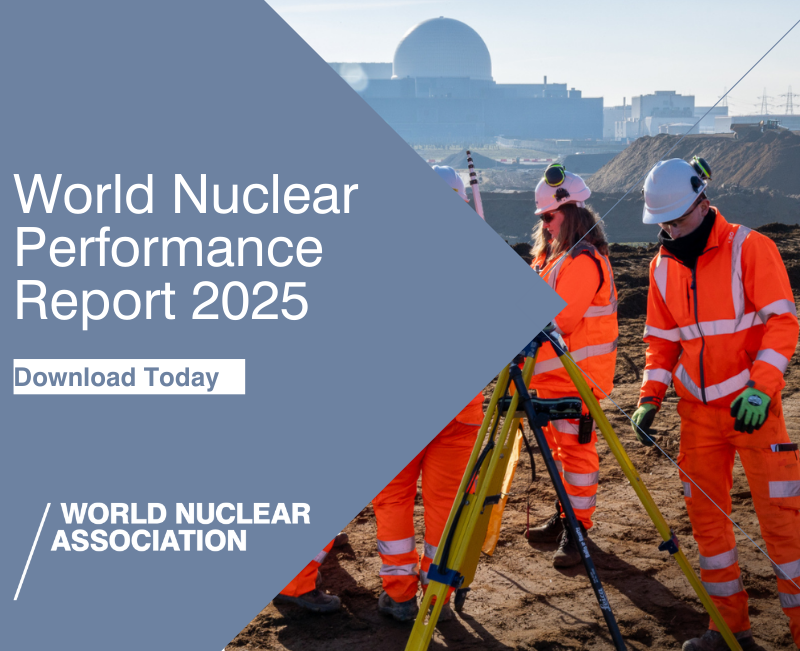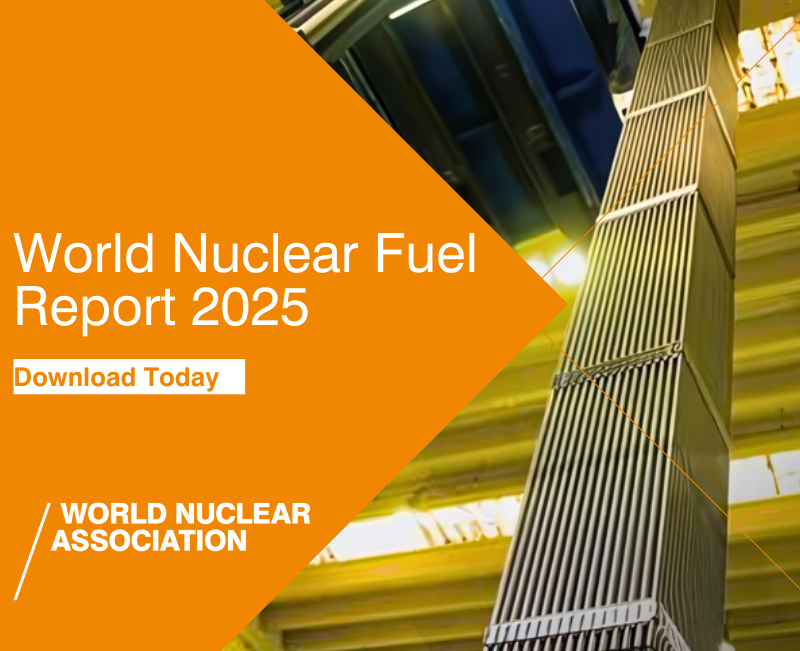Analysis of the UK's civil nuclear sector by Oxford Economics on behalf of the Nuclear Industry Association (NIA) shows that it contributes a range of benefits to the country's economy, from its provision of energy through to its investment in skills and innovation. The value created by the sector delivers billions of pounds worth of economic output, supports tens of thousands of jobs, and generates a substantial stream of tax revenues for the government.
Its report - Economic Impact of the Civil Nuclear Industry - shows Britain's nuclear power sector grew by a quarter in 2024 to GBP20 billion (USD27 billion) compared with three years ago. The total contribution is equivalent to 0.8% of the UK's total GDP in 2024. The sector generated an extra GBP4.2 billion in gross value added (GVA) in 2024 compared with 2021, when the last analysis was undertaken.
Each nuclear sector employee contributed an average of GBP92,000 in GVA to the economy, almost twice as high as the average UK worker, reflecting the highly skilled nature of the workforce. The total number of jobs supported by the sector is 256,000.
In the South West, where Hinkley Point C is being built, 27,000 direct jobs are supported, with the region seeing a 50% jump in GVA to GBP4 billion since 2021. In the East of England, home to the proposed Sizewell C plant, the regional GVA from nuclear grew by one-fifth to GBP1.2 billion, supported by a workforce of 2300, 27% bigger than in 2021.
The North West, home to Sellafield, the National Nuclear Laboratory and the Heysham power plant, as well as Urenco at Capenhurst and the Springfields fuel plant, continues to have the largest impact. Some GBP4.1 billion in GVA was contributed by the sector across the region in 2024.
“More nuclear means more jobs and sustainable growth right across the country," said NIA Chief Executive Tom Greatrex. "Now is the time for final decisions on Sizewell C, the first of a fleet of small modular reactors (SMRs) and a clear plan for further large-scale and advanced technologies, to boost our energy security, provide high quality long term jobs and reduce our reliance on foreign gas to keep the lights on.
"Countries around the world are advancing their nuclear programmes and without confirmation on projects soon the UK will risk being left behind. In short – we need to get on with it."
Sam Moore, Managing Director of Oxford Economics, added: "The nuclear industry makes a hugely significant contribution to the UK economy, creating opportunities for people and businesses right across the country. It also provides highly-paid, skilled jobs in areas which really need them, including in some of the most deprived areas of the country. That is on top of the vital role the sector plays in providing energy security and clean power, cutting Britain’s reliance on fossil fuels and strengthening its energy resilience."
The UK has nine reactors across five nuclear sites providing around 14% of the country's electricity from 5.9 GW of capacity. Of the current fleet, only Sizewell B will be in operation after March 2030. Hinkley Point C is due to come online by the end of the decade.
Increase in engineering opportunities
The Engineering Construction Industry Training Board (ECITB) says its Labour Forecasting Tool (LFT) provides insights into workforce numbers across regions and sectors, predicting trends and potential future demand for workers in the industry.
The tool, which was first launched in November 2023, has been updated using findings from the ECITB 2024 Workforce Census and publicly stated timescales on 3000 active and future engineering construction industry (ECI) projects across Great Britain.
The ECITB's latest forecast states that the size of the ECI workforce in the nuclear sector could grow to more than 46,000 by 2030, up from 35,900 in 2025. Steel erectors, electrical technicians and welders are set to be among the roles most in demand.
It says this growth reflects the volume of workers needed at Hinkley Point C and Sizewell C, but is also dependent on the extent to which the development of SMRs is ramped up and the timescale for building work starting on the new nuclear power plant earmarked at Wylfa in Anglesey, North Wales.
The ECITB Workforce Census 2024 highlighted that the nuclear sector is now the largest engineering construction sector in terms of workforce, employing 39.2% of the total ECI workforce, up from 34.6% in 2021.
"The updates to the LFT reinforce the scale of the challenges facing industry that were outlined in our Workforce Census Report, which revealed that 91% of ECI employers in the nuclear sector are experiencing challenges hiring workers," said ECITB Chief Executive Andrew Hockey. "It also highlighted that employers in the sector estimate a 10% increase in headcount by 2027, although our latest LFT forecast puts this figure at 29% by 2030.
"We recognise that addressing skills shortages in the nuclear sector requires a collaborative, multi-agency approach that includes employers, governments, training providers and the ECITB. So, we're calling on all of the sector to work together to help increase the pool of people joining the industry, while continuing to train and upskill existing workers."

_11412.jpg)



_18570.jpg)
_16159.jpg)
_18938.jpg)
_33584.jpg)





